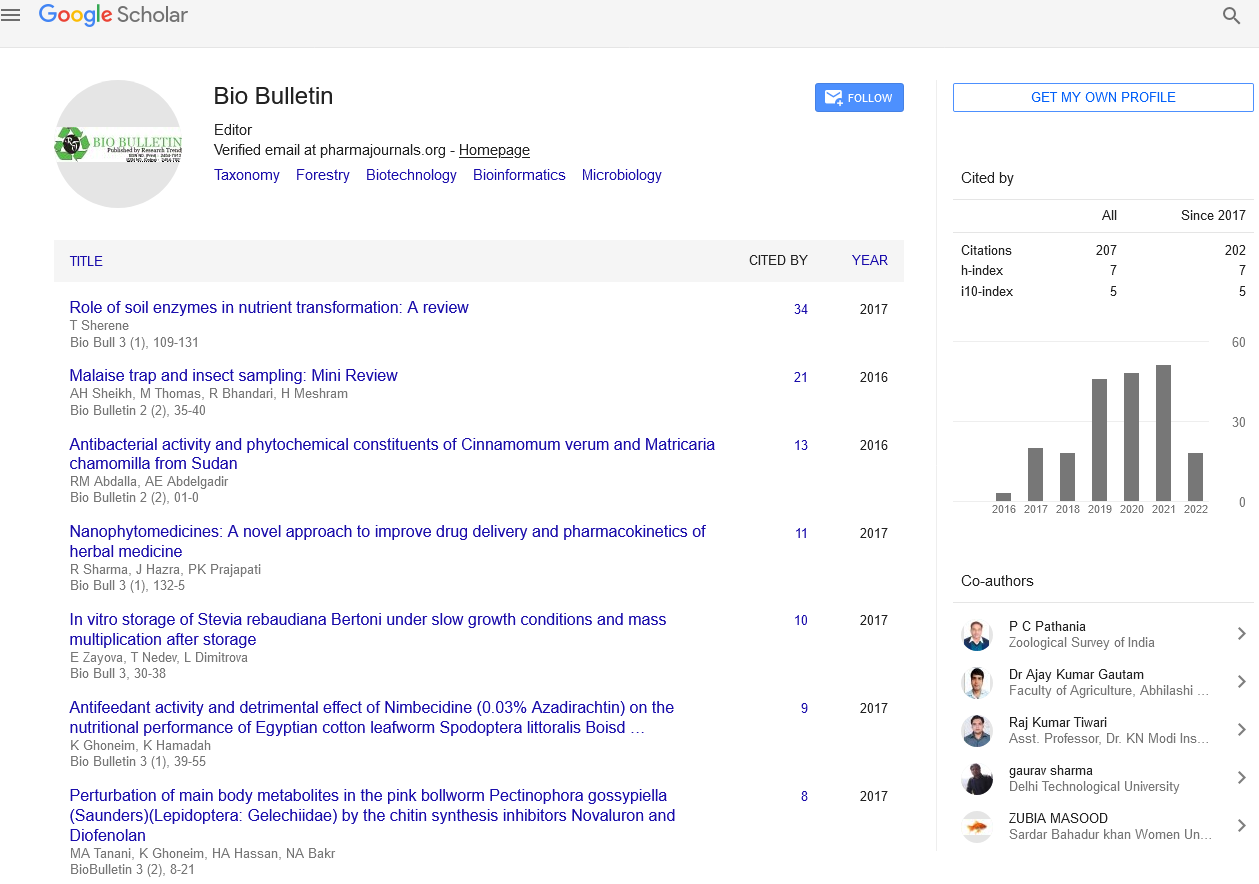Perturbation of main body Metabolites in the Pink Bollworm Pectinophora gossypiella (Saunders) (Lepidoptera: Gelechiidae) by the chitin synthesis inhibitors Novaluron and Diofenolan
Abstract
Author(s): M.A. Tanani*, K. Ghoneim*, H.A. Hassan** and N.A. Bakr*
The pink bollworm Pectinophora gossypiella (Saunders) (Lepidoptera: Gelechiidae) is one of the most destructive insects attacking cotton fields world-wide. It acquired resistance against most of the conventional pesticides. Therefore, the objective of the present study was to investigate the disturbances of the main body metabolites (proteins, carbohydrates and lipids) in homogenates of larvae (6 hr post-treatment) as well as in early- aged pupae (1-day old), mid-aged pupae (3-day old) and late-aged pupae (7-day old), after treatment of full grown larvae with LC50 of Novaluron (0.765 ppm) and Diofenolan (0.036 ppm). Treatment with Novaluron or Diofenolan resulted in a considerable reduction in the protein content of larvae. Novaluron exceptionally enhanced the early- and mid-aged pupae to gain remarkably increasing proteins but a reducing action was exerted on the late-aged pupae. Diofenolan exhibited a predominant reducing effect on the protein content in pupae of all ages. Carbohydrates had been drastically declined in larvae. Diofenolan was stronger than Novaluron for reducing this metabolite. With regard to pupae, both CSIs exerted prevalent reducing actions, regardless the age. Novaluron and Diofenolan suppressed the lipid content in larvae. Diofenolan was comparatively stronger than Novaluron for reducing this metabolite. The successfully developed pupae suffered powerful inhibitory effects on their lipid contents.
Share this article

